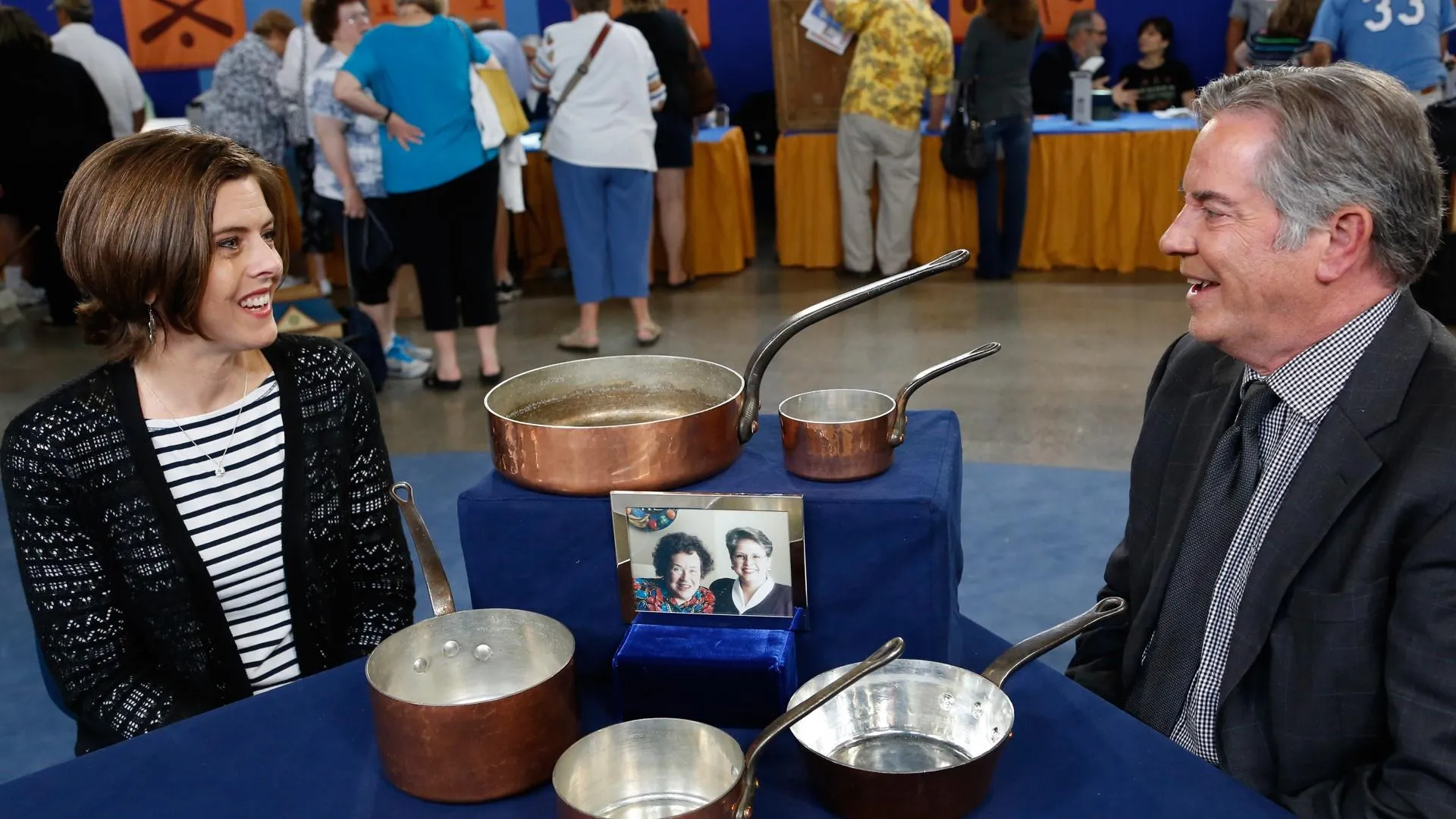GUEST: Well, it was about 1963 and my music teacher decided I was doing pretty well, and he said, "You need a slightly better violin than the one you're playing," and he offered this to me. He said he found it because it fit my size and he thought it would be good for me. And it cost $180. At that point, I was having to pay for the music lessons and my parents didn't have the $180, so they told me, "If you can come up with half the money, "we'll get it for you. We'll make up for the rest."
APPRAISER: So how did you earn $90 in 1960... Did you say 1963?
GUEST: '63. Actually, I didn't raise all the money, but I raised $62 by selling Krispy Kreme donuts on Saturday mornings. I went door to door and made about $62, and they decided that was fine. They came up with the rest of the money, and I bought the violin. And of course when you buy a violin, it doesn't necessarily come with a bow. My father said, "Well, I played the violin as a boy, "and I've got an old bow. Why don't you just use my bow?" He said it was French, and that's about all he really said. Recently, because my granddaughter started playing the violin, I decided that I'd fix it up a little bit and I took it to a gentleman here in Henrico, and he said it was worth fixing up, it was worth a couple thousand dollars. But then my daughter thought maybe it was worth more. She asked someone else to take a look at it. They said it was worth more than that, maybe $10,000 or something like that. I said, "Oh, poo, it's not... It's worth maybe a couple thousand." And she said, "We need to take it to the ROADSHOW and find out what it's worth." So I guess that's why we're here.
APPRAISER: Well, thank you because it is an interesting violin. It has a label on the inside, and it says "Salvatore Rossani, Milano 1910." So one thinks immediately that it was made in Italy, but it's not. So this is an instrument that was made in Germany, and there was a time when the Germans felt like they would have more of an advantage in the marketplace if their names didn't sound German, and so they would create these Italian names to write on their labels. I'm seeing a violin that's made out of absolute first-class quality wood and varnish, and it's very typical of instruments that were made in the big violin-making center of Markneukirchen, Germany. We will never know exactly who made it, but there were some great makers that worked there at that time. So in the retail world, a violin like this these days sells for between $5,000 and $7,000.
GUEST: Very good.
APPRAISER: So let's talk about the bow a little bit. Are you aware that the French made some of the finest bows in existence?
GUEST: Yes, I do know that.
APPRAISER: Okay. So the French were to bows as the Italians were to violins. They were the great masters. So this is a bow that was made in the beginning of the 20th century also. It does have this brand right here that says "E. Sartory ‡ Paris." And there are lots of bows that have that on them, but they're not really made by Sartory at all. So I've looked at this bow extremely carefully, and it has all the marks of an actual Sartory that was made late in his life. He lived between 1871 and 1946. And I would say a conservative retail figure would be $20,000.
GUEST: Oh, my goodness. (chuckles)
APPRAISER: So it's really the bow that has the major significance here.
GUEST: Well, this means I have to find something really, really nice to give my other grandchildren.
APPRAISER: I suppose that's true.











